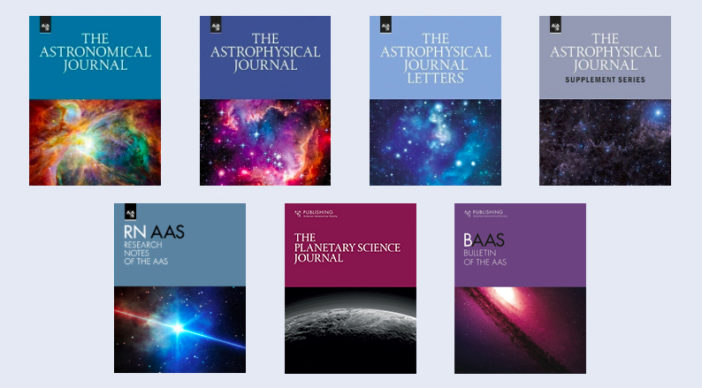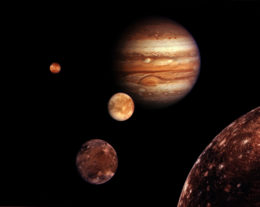One of the best aspects of being owned and run by a professional society is that AAS Publishing offerings are shaped directly by the community we serve.
While the scopes of our established journals — The Astronomical Journal, The Astrophysical Journal (ApJ), ApJ Letters, ApJ Supplement Series, and Research Notes of the AAS — are broad, members and authors have asked us for a new journal dedicated exclusively to planetary science content.
We’re therefore proud to respond this year with the announcement of a new peer-reviewed publication in the AAS journal family: The Planetary Science Journal (PSJ), produced in a partnership between the AAS and its Division for Planetary Sciences (DPS). The PSJ has now officially opened for submissions.
Exploring Close to (and Far from) Home
What can you expect to find in the PSJ? The journal welcomes all studies addressing recent developments in planetary science — a field that includes both our own solar system and other planetary systems.
This means the PSJ will be open to explorations of Europa’s ocean depths and icy plumes, the motions of dust on Mars, the structures of mountains and valleys on Pluto, the turbulence in Venus’s thick cloud layer, the dynamics of nearby rocky asteroids, the atmospheric compositions of distant exoplanets — and so much more.As with the other AAS journals, the PSJ welcomes studies that include not only observational discoveries, but also theoretical insights, new models, outcomes from laboratory studies, details about instrumentation, and even field studies.
New Practices
While the PSJ will largely follow the model of the other AAS journals, we’ll be showcasing a few new practices as well.
First, The Planetary Science Journal will be a fully gold open access journal, which means that its articles will be free for all to read immediately upon publication. The articles will be published under a Creative Commons CC BY 4.0 license.
Next, in accordance with common practice in the planetary science community, articles submitted to the PSJ will generally be sent to two reviewers to provide more feedback to authors.
Finally, the PSJ seeks to minimize implicit bias by instituting a Dual Anonymous Review policy: by default, both authors and reviewers will be anonymous throughout the refereeing process unless they choose to identify themselves. This standard practice is intended to protect authors potentially impacted by negative biases and increase the inclusivity of the field.
Leading the Charge
The PSJ is fortunate to have Dr. Faith Vilas (Planetary Science Institute) at the helm as Editor for the journal. If you’ve submitted to AAS journals in the past, you may have had Faith as your scientific editor — her new position as Editor of the PSJ is not her first time working with the AAS journals!
Faith studies airless bodies like asteroids, the Moon, planetary satellites, and Mercury, and she’s built a long record of achievement throughout her career. Next week at the American Geophysical Union (AGU) meeting, Faith will be presented with the Fred Whipple Award, the highest honor given by the Planetary Sciences section of the AGU.
Find Out More and Submit
Will you, too, be at the AGU meeting in San Francisco next week? Stop by the IOP Publishing booth (1116) on Wednesday, December 11 at 3:45 to celebrate The Planetary Science Journal’s launch with us and meet Editor Faith Vilas!
Want to learn more about the PSJ? Read the press release about the launch or visit the PSJ’s home page at AAS Journals.
Ready to submit? We look forward to receiving your manuscript!




1 Comment
Pingback: Planetary Studies from a New Journal